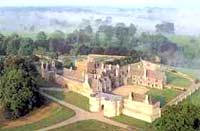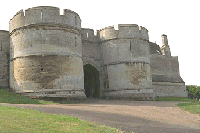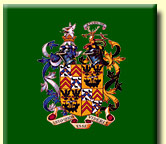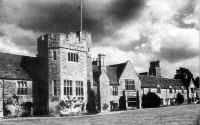|



Photographs, crest and text
courtesy of www.rockinghamcastle.com

1925
|
Cottingham
nestles in the Welland
Valley under the watchful eye of Rockingham Castle. Built
in the 11th Century on the orders of William the Conquerer, Rockingham Castle
was a stronghold for the Norman king, and an important seat of government, the Great Council of Rockingham being held
there in 1095.
Many medieval Kings came to Rockingham Castle. Richard the Lionheart played host
to his Scottish counterpart there and his unpopular brother John came frequently
to hunt in Rockingham Forest.
Little of
the original Norman castle remains now, and the imposing gatehouse was built in
Medieval times. There
used to be a prison/dungeons at the castle, but this, along with the
church and almshouse, was destroyed during the Civil War, circa 1645. Originally a Royalist stronghold, Rockingham Castle was taken by
Cromwell's Roundheads and then besieged by the King's troops.
In
the 16th century, Henry
VIII granted the Castle to Edward Watson, ancestor of the present owner James
Saunders Watson, who converted the medieval fortress into a comfortable Tudor
house.
In
1618, the then owner, Sir Lewis Watson, diverted the road through Rockingham
village to its present course up Rockingham Hill. The original road had for
centuries passed close to the castle walls, with a back lane east of the
village.
In Victorian times, Charles Dickens was a regular visitor to the castle, often
performing in his own plays in the Long Gallery and drawing inspiration from
Rockingham Castle for Chesney Wold in his novel Bleak House.
|